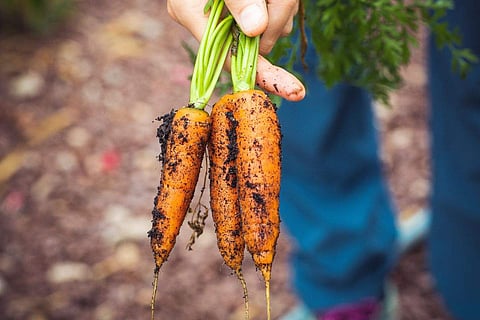
- LIFESTYLE
- FASHION
- FOOD
- ENTERTAINMENT
- EVENTS
- CULTURE
- VIDEOS
- WEB STORIES
- GALLERIES
- GADGETS
- CAR & BIKE
- SOCIETY
- TRAVEL
- NORTH EAST
- INDULGE CONNECT

Growing your food has grown in popularity in urban spaces. But with the summer heat, many would probably find gardening outdoors exhausting. But there are some vegetables that you can grow indoors, which will save you money and energy in the long run.
Microgreens
This vegetable is one of the most popular and easiest to grow indoors. You can grow the seeds in jars filled with water, but it is better to grow them in the soil as it reduces the chances of the plants getting bacterial contamination. Unlike with other vegetables, there’s no need for drainage holes since sprouts and microgreens require little water. They also require little time to grow.
Garlic Greens
To grow garlic greens indoors, plant three or four cloves of garlic in a pot filled with potting soil. Keep them on a sunny window ledge and water them lightly. The plant must receive 5-6 hours of daylight for proper growth. The garlic greens will grow in seven to 10 days and can be snipped.
Carrot
Carrots are another easy vegetable you can grow indoors. They need 6-8 hours of sunlight, so place the container in a sunny location. Carrots don't require much space but need deep containers (at least 12 inches) with good drainage to thrive. If space is a concern, try to grow shorter and fatter varieties, or you can harvest the carrots at the baby stage.
Potato
This vegetable is a staple of Indian households. Potatoes need sunlight for 7-8 hours. Place the container in a bright and sunny spot, especially near a south-facing window. If you don't have a sunny area, use artificial grow lights. Like carrots, they do not take up much space, but they must be grown in containers 12 to 14 inches deep.
Coriander
You can grow coriander both indoors and outdoors. Pick a spot for your container that exposes the plant to the sun for 4-5 hours. Your container must be approximately 10 inches so that the roots can grow. You must also ensure that the bottom of the container has plenty of drainage holes. Coriander needs extra fertile soil if growing indoors. The soil should also be wet but not soaked.
Also read: Eating right makes a difference
While these vegetables can be grown inside your home, doing so comes with challenges. You will need to take into account factors like soil fertility, air circulation, humidity and pests. But with hard work and dedication, you will get good results.